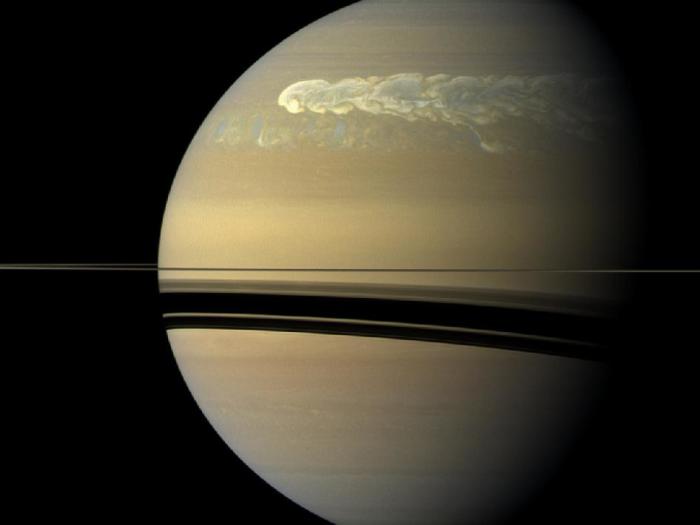Saturn's Enormous Storm Composite Captured by Cassini Spacecraft (PHOTOS)
A storm eight times the surface area of Earth has been battering Saturn's surface as the captured image by the Cassini Spacecraft reveals below.
The storm which was first detected in December 5, 2010, by Cassini has been ongoing since then and is reported to have been wrapping around Saturn's surface, covering an estimated 1.5 billion square miles.
According to Andrew Ingersoll from the Cassini imaging team at Caltech in Pasadena, Calif., Saturn is "bipolar." He explains that unlike "Earth and Jupiter, where storms are fairly frequent, weather on Saturn appears to hum along placidly for years and then erupt violently."


At its highest intensity, NASA reported that the storm would generate 10 lightning flashes per second and that at least 10 lightning storms were detected by Cassini since the spacecraft started orbiting Saturn.
"This storm is thrilling because it shows how shifting seasons and solar illumination can dramatically stir up the weather on Saturn," commented Georg Fischer, a science team member at the Austrian Academy of Sciences in Graz. "We have been observing storms on Saturn for almost seven years, so tracking a storm so different from the others has put us at the edge of our seats."
The Cassini-Huygens mission is a cooperative project of NASA, the European Space Agency and the Italian Space Agency.
(Source: NASA)




























